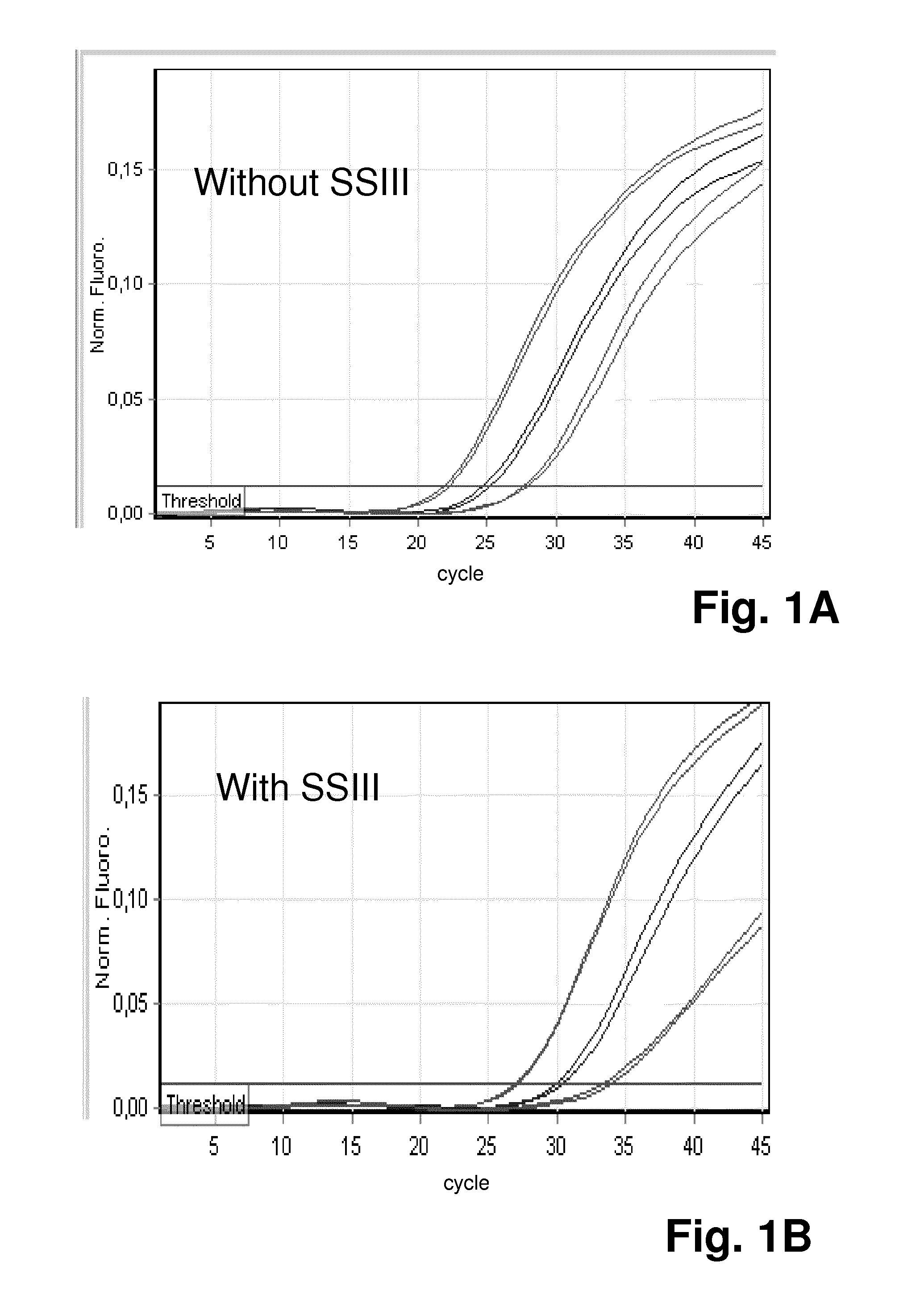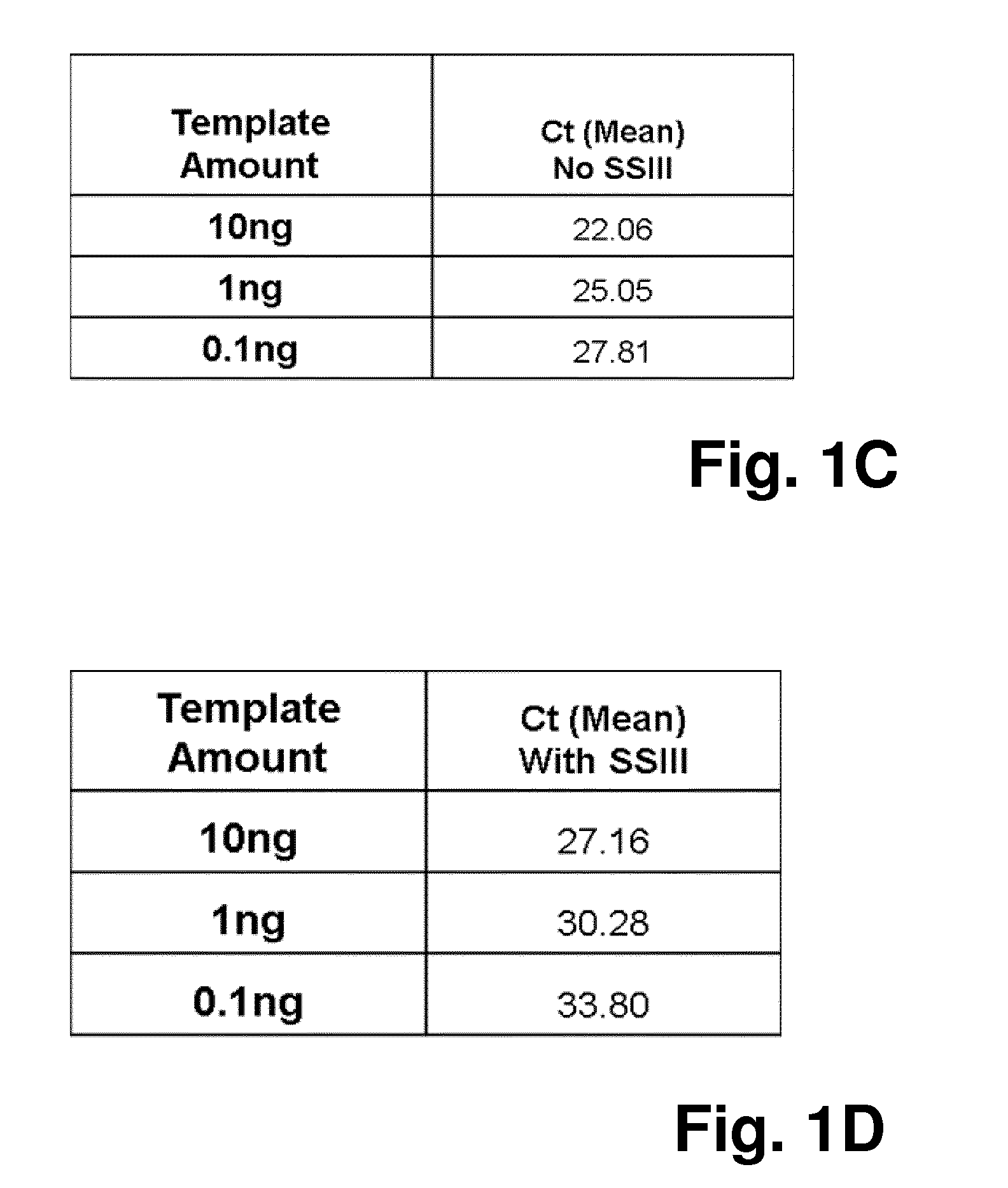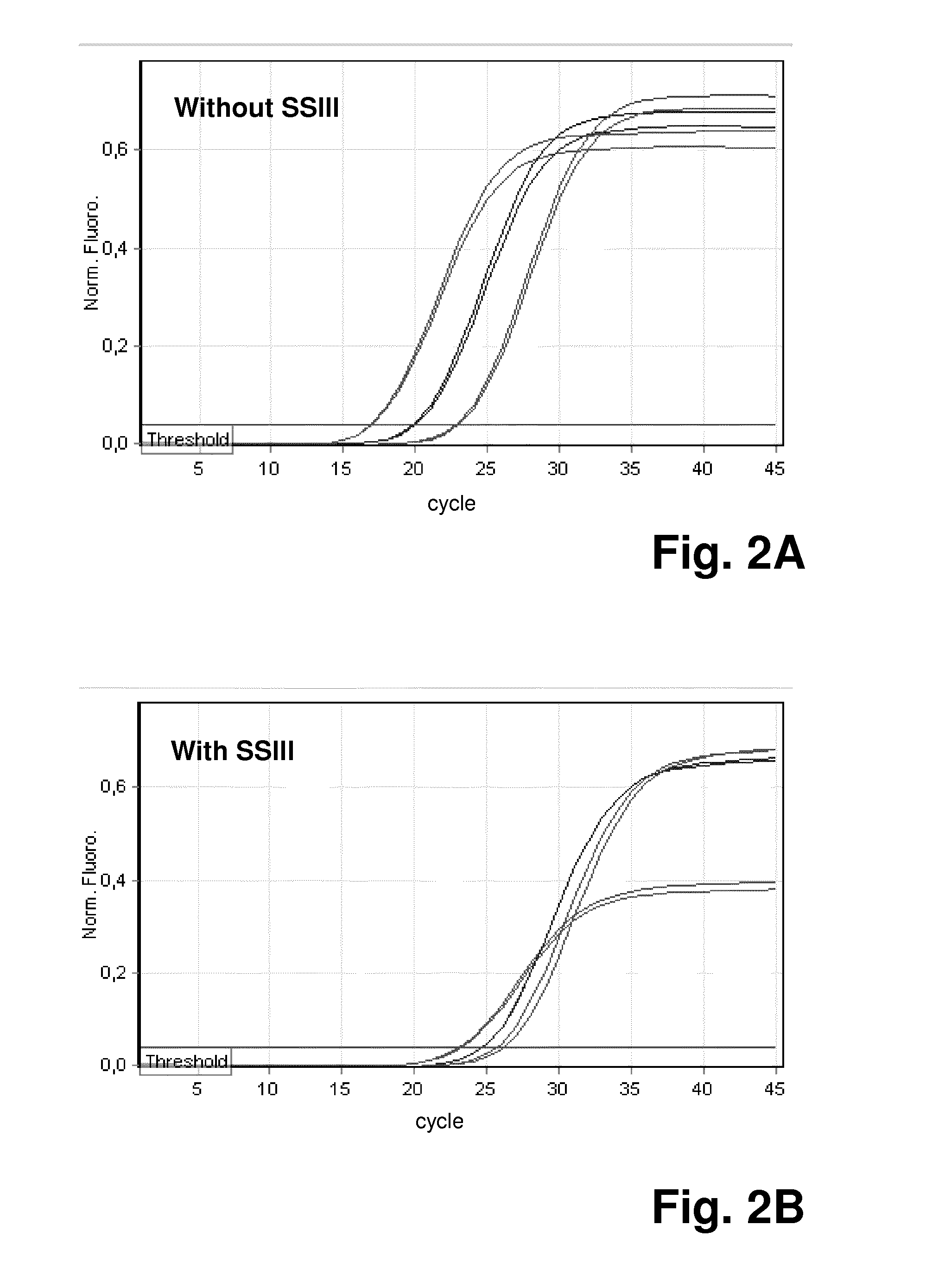Nucleic acid detection and quantification
a nucleic acid and quantification technology, applied in the field of molecular biology, can solve the problems of not being able to compare the level of different targets, not being able to give information on whether additional sequences are amplified in the same pcr, and not being able to discriminate between correct products and non-specific products, etc., to achieve the effect of reducing the efficiency of library preparation and controlling for potential bias
- Summary
- Abstract
- Description
- Claims
- Application Information
AI Technical Summary
Benefits of technology
Problems solved by technology
Method used
Image
Examples
example 1
[0071]With the method and uses according to the present invention, the causes of suboptimal PCR performance can be assessed with the aim to optimize the PCR chemistry and the PCR conditions accordingly.
[0072]Thus, in a first experiment, it was assessed which impact the enzyme reverse transcriptase—which is often present in PCR reaction due to prior reverse transcription reactions that are performed in the same vessel as a subsequent PCR reaction—has on the qPCR reaction.
[0073]Reverse transcriptase can inhibit PCR through its binding to DNA templates, and it can also cause nonspecific primer extension in a PCR reaction mix and lead to the formation of primer dimer and / or non-specific PCR products. Both mechanisms can negatively affect one-step and two-step reverse transcriptase PCR reactions, leading to lower PCR efficiency and sensitivity. In order to be able to differentiate between those two different mechanisms, the method according to the invention was applied:
[0074]In the perfo...
example 2
[0080]In another experiment, the method according to the invention was used to quantify a specific target in a mixed nucleic acid population and the total amount of nucleic acid mixture simultaneously. Accordingly, the method according to the invention may be used for quantification and qualification of, e.g., a DNA library.
[0081]For this purpose, a duplex PCR experiment was performed where both 18s (Primers: GCCGCTAGAGGTGAAATTCTTG (SEQ ID No. 4) and CATTCTTGGCAAATGCTTTCG (SEQ ID No. 5)) and GAPDH genes (Primers: TTCCACCCATGGCAAAT (SEQ ID No. 1) and GAAGATGGTGATGGGATTTC (SEQ ID No. 2)) were amplified from human genomic DNA and the total amount of both genes were quantified by SYBR Green while that of the GAPDH was specifically quantified by using HEX-labeled TaqMan probe HEX-CAA GCT TCC CGT TCT CAG CC-BHQ (SEQ ID No. 3).
[0082]FIG. 4A demonstrates the quantification of both GAPDH and 18s amplicons with SYBR Green amplification plots, while FIG. 4B demonstrates specific quantification...
example 3
[0086]In yet another experiment, the method according to the invention was used to simultaneously quantify a specific target in a mixed nucleic acid population and the total amount of nucleic acid mixture.
[0087]FIG. 5 shows a diagram displaying the construction flow for generating a library for use, e.g., in a sequencer such as the GeneReader (QIAGEN): For this purpose, DNA fragments, generated either by random fragmentation, enzymatic fragmentation, or PCR, were ligated with platform-specific adaptors B and X in order for them to be clonally amplified and then sequenced. As a consequence, there were three possible combinations of the adaptors after ligation: (i) the DNA fragment will be ligated with the X adaptor at one end and the B adaptor at the other end; (ii) the DNA fragment will be ligated with two B adaptors at both ends; and (iii) the DNA fragment will be ligated with two X adaptors at both ends. Since the B adaptor is the adaptor that has binding site for the sequencing p...
PUM
| Property | Measurement | Unit |
|---|---|---|
| Efficiency | aaaaa | aaaaa |
| Fluorescence | aaaaa | aaaaa |
Abstract
Description
Claims
Application Information
 Login to View More
Login to View More - R&D
- Intellectual Property
- Life Sciences
- Materials
- Tech Scout
- Unparalleled Data Quality
- Higher Quality Content
- 60% Fewer Hallucinations
Browse by: Latest US Patents, China's latest patents, Technical Efficacy Thesaurus, Application Domain, Technology Topic, Popular Technical Reports.
© 2025 PatSnap. All rights reserved.Legal|Privacy policy|Modern Slavery Act Transparency Statement|Sitemap|About US| Contact US: help@patsnap.com



